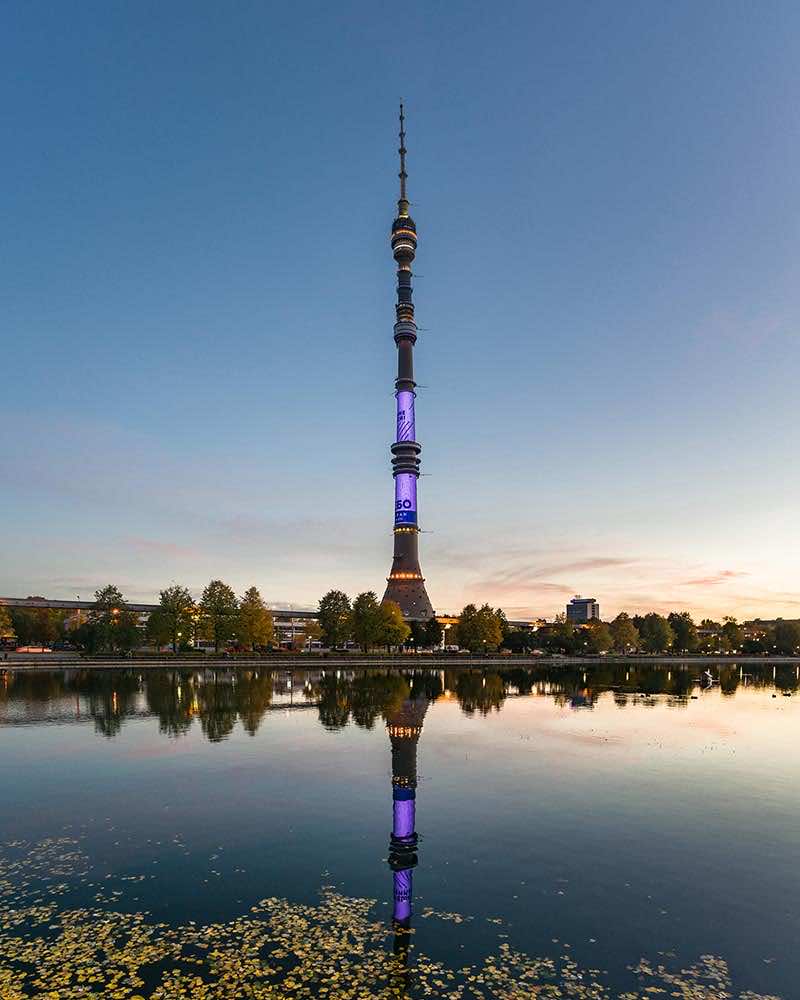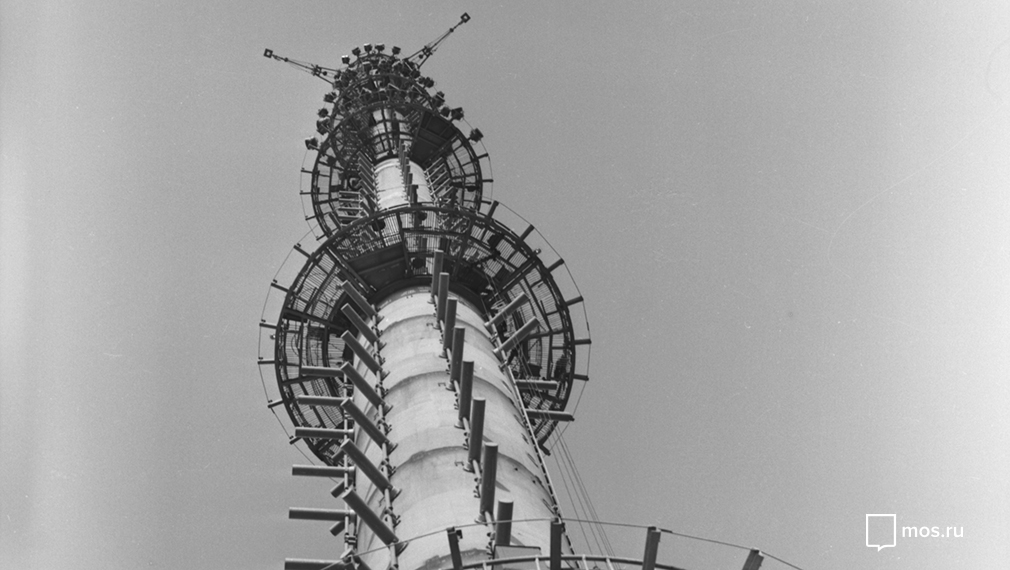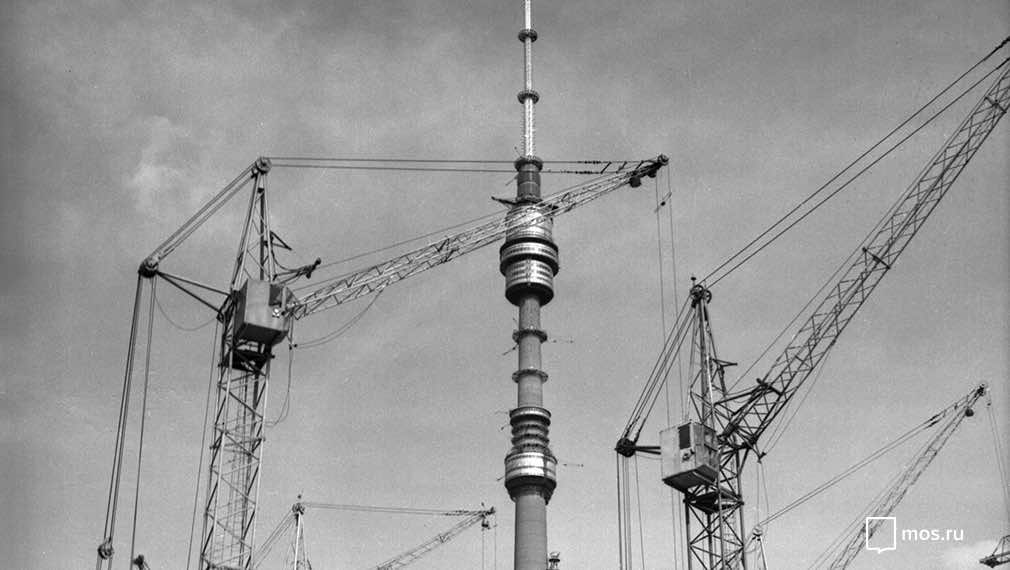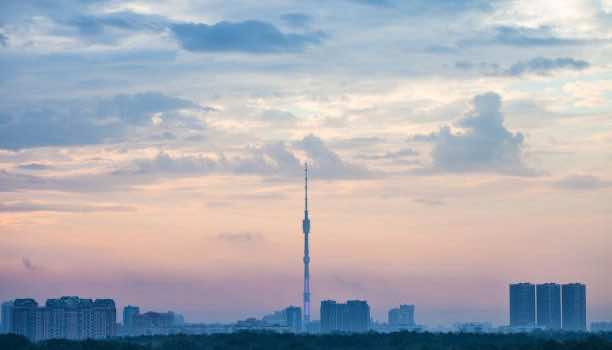Ostankino Tower is a television and radio tower in Moscow, Russia that was built by the Soviet government between 1963 and 1967. At its completion in 1974, it was the tallest building in the world. The tower was the first free-standing structure to exceed 500 m (1,600 ft) in height. Ostankino was built to mark the 50th anniversary of the October Revolution. It is currently the tallest free-standing structure in Europe and 11th tallest in the world.

Extensive use of pre-stressed concrete resulted in a simple and sturdy structure that was a masterpiece of Soviet engineering at the time. The concrete is reinforced with steel cables which are compressed – allowing the structure to stretch in response to forces like wind and structural movement. The pre-stressed concrete with steel reinforcement is also able to handle compression by the same forces. The tower (outside ring) and the shaft (inside ring) of the structure also have separate foundations, which allows for differences in pressure exerted on the ground by the two structures.
Chief designer Nikolai Nikitin imagined the imposing structure, which weighs 55,000 metric tonnes, as a flower, a lily with a strong stem turned upside down. The foundation of the tower itself is 9.5 metres in diametre set in a base 3 metres high and 74 metres in diametre. It is 4.65 metres underground. The overall diametre of the splaying “legs” is 60.6 metres, which is 18 metres down in the ground and 63-metres high. Up to the 385-metre level, the TV tower is made of pre-stressed concrete.

Normally, such tall structures rely on a deep foundation. But Ostankino’s designer decided to make the tower resilient and stable by making its foundation far heavier than the structure itself. Ostankino Tower’s weight is distributed between the foundation and the trunk in a strict 1:3 proportion, with the centre of gravity at the height of 110 metres. That is why only the antenna-bearing section shifts from side to side. To protect the tower from the wind and sun, 149 steel cables were installed inside the trunk, 50 mm from its internal surface, with a tension of over 10,000 metric tonnes. The cables strung the tower’s outer body together and bore the transverse tensions, thereby preventing the concrete from cracking and protecting the steel framework from corrosion.
Apart from a fire in 2000 that caused extensive damage, the structure of the tower has revealed itself to be both innovative and stable in the long term, to this day it is seen as a true feat of Soviet engineering.



